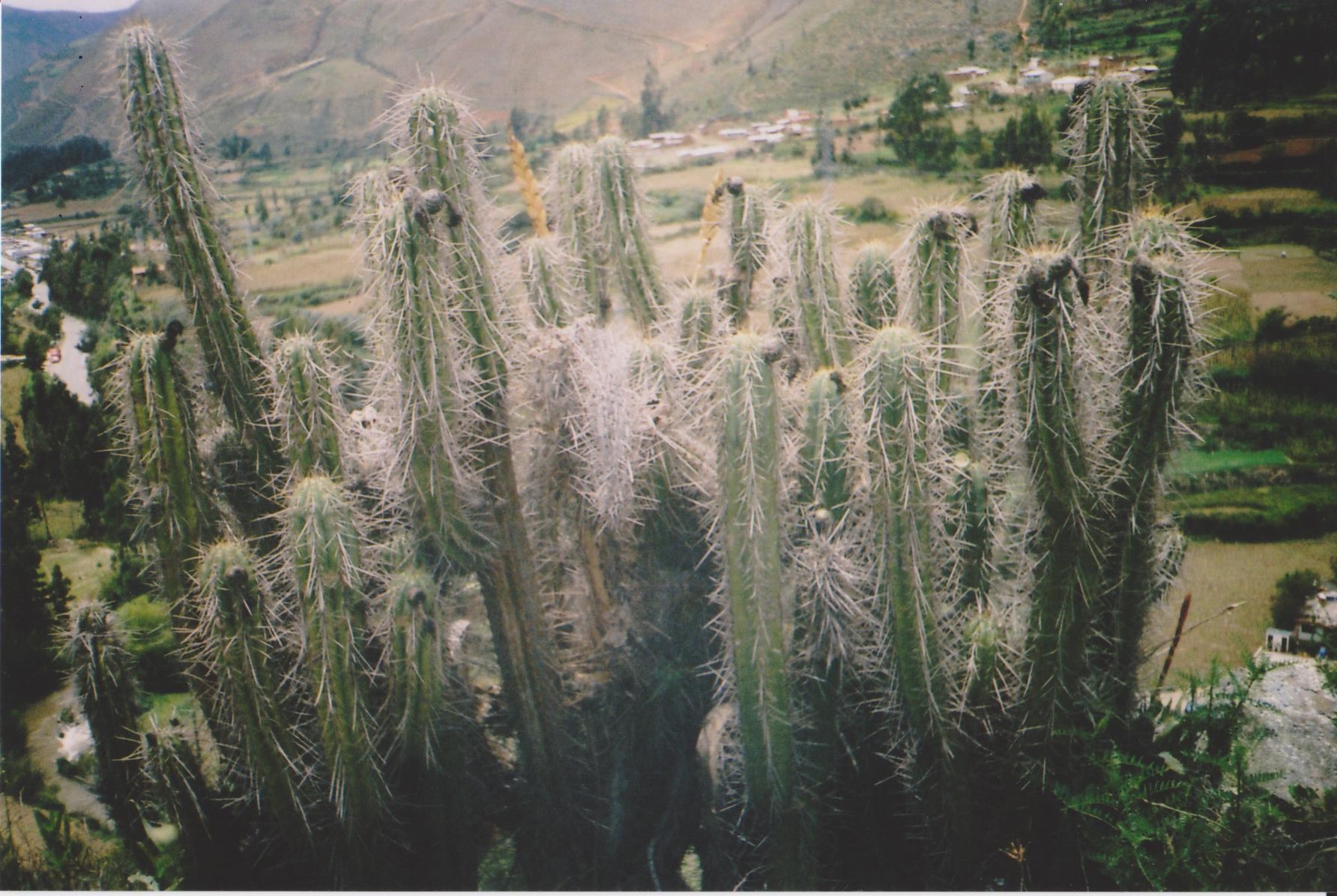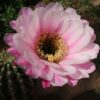
Trichocereus tarmaensis Rauh & Backeberg is a close relative of Trichocereus cuzcoensis that was described as a separate species. There are various differences between Trichocereus cuzcoensis and this species, and some forms of Trichocereus knuthianus are considered to be synonymous with T. tarmaensis as well.

Trichocereus tarmaensis reaches a size of 2 meters and is pupping from the base. It has 7-9 ribs that are approximately 2 centimeters wide, rounded at the top and with very distinct V-notches above the areoles. The areoles are approx. 2-2,5 centimeters apart with a diameter of 9 millimeters. Young growth areoles have a very fine brown wool that changes it´s color to a darker brown. It has 3-6 radial spines that are between 1 and 3 cm long. It often has one very large downward pointing spine that is up to 10 centimeters long. The plant usually has one of those middle spines. Old spine growth changes its color very soon to a gray, similar to what we know from Trichocereus cuzcoensis.
Flower of E.tarmaensis:
White, very similar or identical to some of the spiny forms of Trichocereus cuzcoensis or Trichocereus peruvianus. The tube has brown hairs and the fruit reaches a maximum diameter of 5 centimeters.
Type locality:
Central peru, Tarma in Peru at around 3000 meters.
Trichocereus tarmaensis looks very similar to Trichocereus tulhyacensis and both species are hard to distinguish if do not have the luck to observe them during the flowering phase . The flower of Trichocereus tulhuyacensis is pink, which is something that does not apply to any other Trichocereus species from this complex. If your Trichocereus has a reddish to pink flower, it´s not T. tarmaensis but Trichocereus tulhuyacensis or another close relative. Both Echinopsis tarmaensis and Trichocereus tulhuayacensis are very rare and mislabeled anyways. Karel Knize is selling seed of this type under the field number KK2148 .
Photos of Trichocereus tarmaensis

This picture shows a seedgrown specimen that was sold through the SAB shop in Australia.
When looking at this pic, it gets obvious that this type is VERY similar to some types of Trichocereus cuzcoensis, and even has similarities to a KK242. I do not think that specimens of KK2148 could be recognized as such without knowing the label. They are simply synonymous with some types of Trichocereus cuzcoensis. This species grows at around 3000 meters altitude.

Photo: S. Preiss



Below: Some photos from Tarma. The first one does not show a Trichocereus, but the others show some of the wild forms in between Trichocereus tarmaensis and Trichocereus knuthianus.




Check out our main plant database pages for Trichocereus pachanoi aka Echinopsis pachanoi here:
And Trichocereus bridgesii here:
Trichocereus scopulicola
Also check out our Trichocereus Facebook group here:










